Aug 06, 2025
12min Read
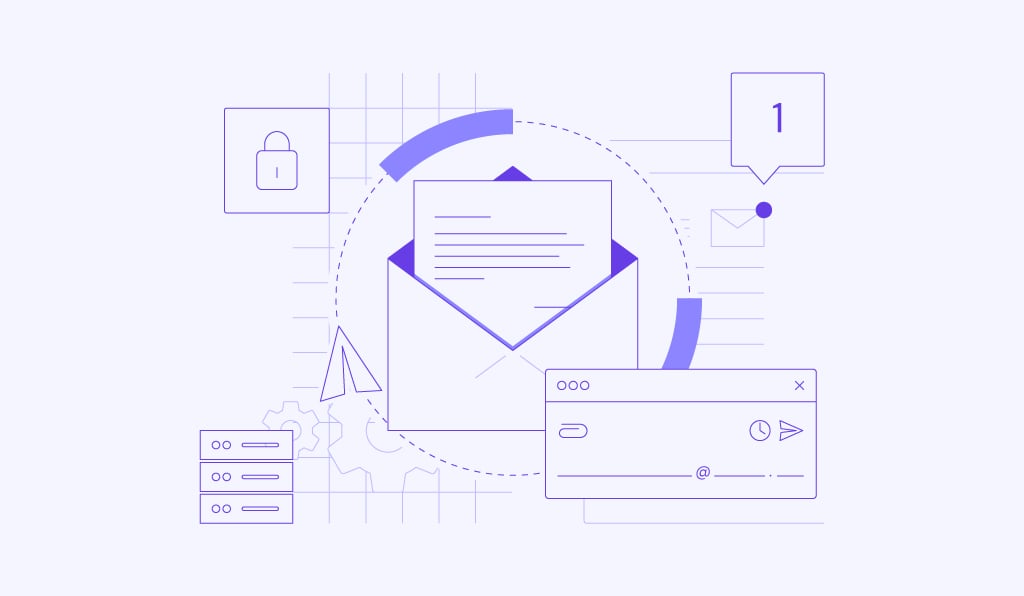
Email marketing campaigns are emails sent to subscribers to achieve specific business goals, such as increasing sales, building relationships, or keeping customers engaged.
There are many different types of campaigns, from welcome emails and abandoned cart reminders to promotional campaigns and newsletters that share valuable content.
Here are some of the top email marketing campaigns we’ll explore:
- Bellroy’s Transit Sling campaign. Uses storytelling and practical demonstration to make products feel essential.
- Birddogs’ Hamptons campaign. Entertains first with humor before revealing the product connection.
- Porte + Hall’s mat campaign. Shows deep understanding of specific customer pain points.
- Tottenham’s news campaign. Turns routine announcements into interactive fan experiences.
- Rare Beauty’s abandoned cart campaign. Recovers sales while maintaining brand voice and adding strategic upsells.
What makes email campaigns work? They combine good timing, content that matters to your audience, and designs that are easy to read and understand. The real trick is figuring out which approach fits your goals and how to make it feel genuine rather than pushy.
The best way to learn is to see these strategies in action. Let’s examine what makes these campaigns so effective and how you can apply these ideas to your own business.
What is an email marketing campaign?
An email marketing campaign is a planned email or series of emails designed to achieve a specific goal. It can be part of a sequence where each message builds on the previous one or a standalone email sent at strategic moments.
Every email serves a purpose in guiding subscribers through a journey, whether that’s making a purchase, signing up for a service, or staying engaged with your brand.
The timeline varies depending on your goal: a welcome series might run for a week, while some campaigns might consist of a single well-timed email.
What makes an email marketing campaign effective?
Understanding your audience’s needs and delivering genuine value are what make an email marketing campaign effective. When you know what your subscribers care about and provide it consistently, they’ll actually look forward to hearing from you.
Every campaign starts with a specific objective, whether that’s welcoming new subscribers, recovering abandoned purchases, or nurturing leads toward a sale. From there, it’s about crafting each email to be easy to read, visually appealing, and focused on one clear action you want people to take.
Of course, there’s more to it than this. To dive deeper into how to create effective email campaigns, check out our tips for effective emails, with actionable strategies that actually get results.
Types of email marketing campaigns
Email marketing campaigns come in several different types, each designed to achieve specific goals at various stages of the customer journey. The main difference between these campaign types is what you’re trying to accomplish with each one.
Some focus on building long-term relationships with subscribers, others are designed to drive immediate sales, and many help guide people through important processes like onboarding or purchase recovery.
Newsletters
Newsletter campaigns are emails that share valuable content, company updates, or industry insights with your subscribers. These brand emails help establish your expertise while keeping your audience informed and engaged.
Goal: Stay top-of-mind, build trust, and position your brand as a helpful resource rather than just another company trying to sell something.
Welcome emails
Welcome email campaigns greet new subscribers and introduce them to your brand, products, or services. These are often your highest-performing email marketing tactics since people just opted in and are most engaged.
Goal: Make a great first impression, set expectations for future communications, and guide new subscribers toward their first purchase or engagement.
Abandoned cart emails
Abandoned cart campaigns target people who added items to their online shopping cart but didn’t complete the purchase. These email blast examples can be highly effective since they reach people who have already shown interest.
Goal: Recover potentially lost sales by reminding customers about their items and addressing any concerns that might have stopped them from buying.
Promotional emails
Promotional campaigns showcase specific products, services, or special offers to drive immediate sales. These email design examples often feature bold visuals and clear calls to action (CTAs) to maximize conversions.
Goal: Create urgency and motivate subscribers to do something, whether that’s making a purchase, booking a service, or taking advantage of a limited-time deal.
Transactional emails
Specific customer actions – such as purchases, account registrations, or password resets – trigger transactional campaigns. These email campaigns also offer opportunities for additional engagement.
Goal: Provide essential information customers need while creating opportunities to enhance their shopping experience and encourage future purchases.
16 best email marketing campaign examples
The best email marketing campaigns each do something exceptionally well, whether that’s keeping subscribers engaged, making people feel connected to companies, or turning casual browsers into loyal customers.
Some of these newsletter campaigns focus on storytelling, others use humor, and many combine multiple email marketing tactics to create campaigns that subscribers actually look forward to receiving.
Whether you’re looking to build relationships, recover abandoned sales, or launch new products, these examples will show you what’s possible when you combine smart strategy with genuine value.
1. Afina
Afina’s email campaign shows how to sell a product by focusing on benefits rather than features.
They break down complex water-purifying technology into simple benefits that anyone can understand, then back it up with a specific statistic to build credibility.
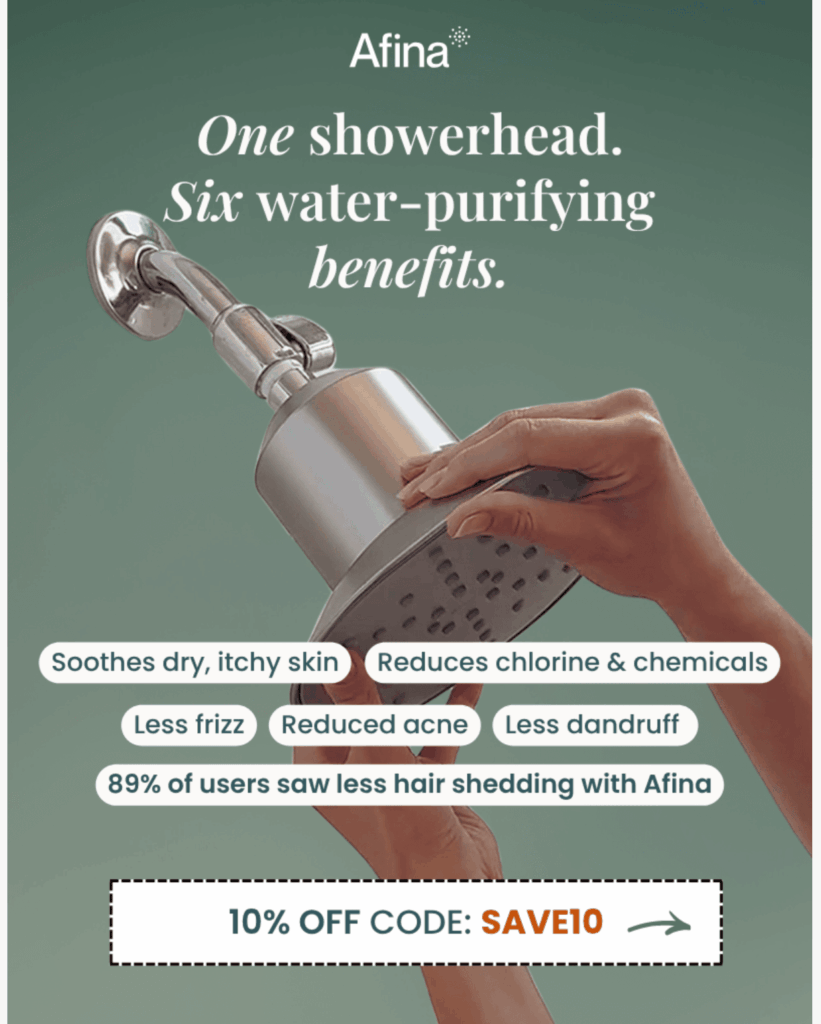
What makes it even better is that they include authentic social proof from a real customer who’s clearly excited about her results. This strategy transforms a simple product promotion into a compelling customer story.
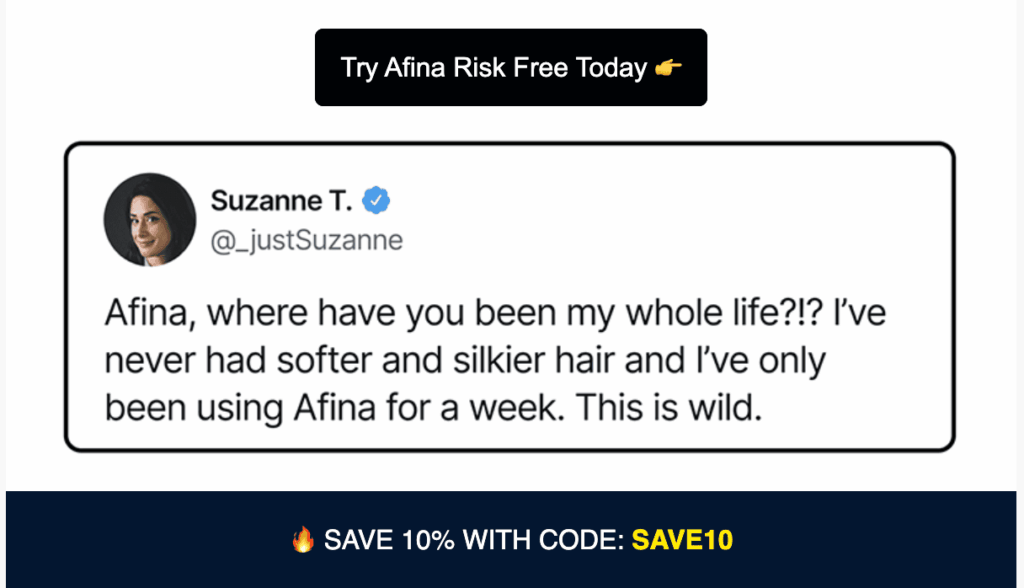
What makes this campaign effective: It combines clear benefits that solve everyday problems like frizzy hair and dry skin, authentic customer feedback, and a discount code to try the product.
2. Bellroy
Educational content can make product features feel essential rather than optional, and Bellroy’s Transit Sling bag campaign proves this perfectly.
The headline hooks you right away, making it feel more like you’re going to get helpful advice than a sales pitch.
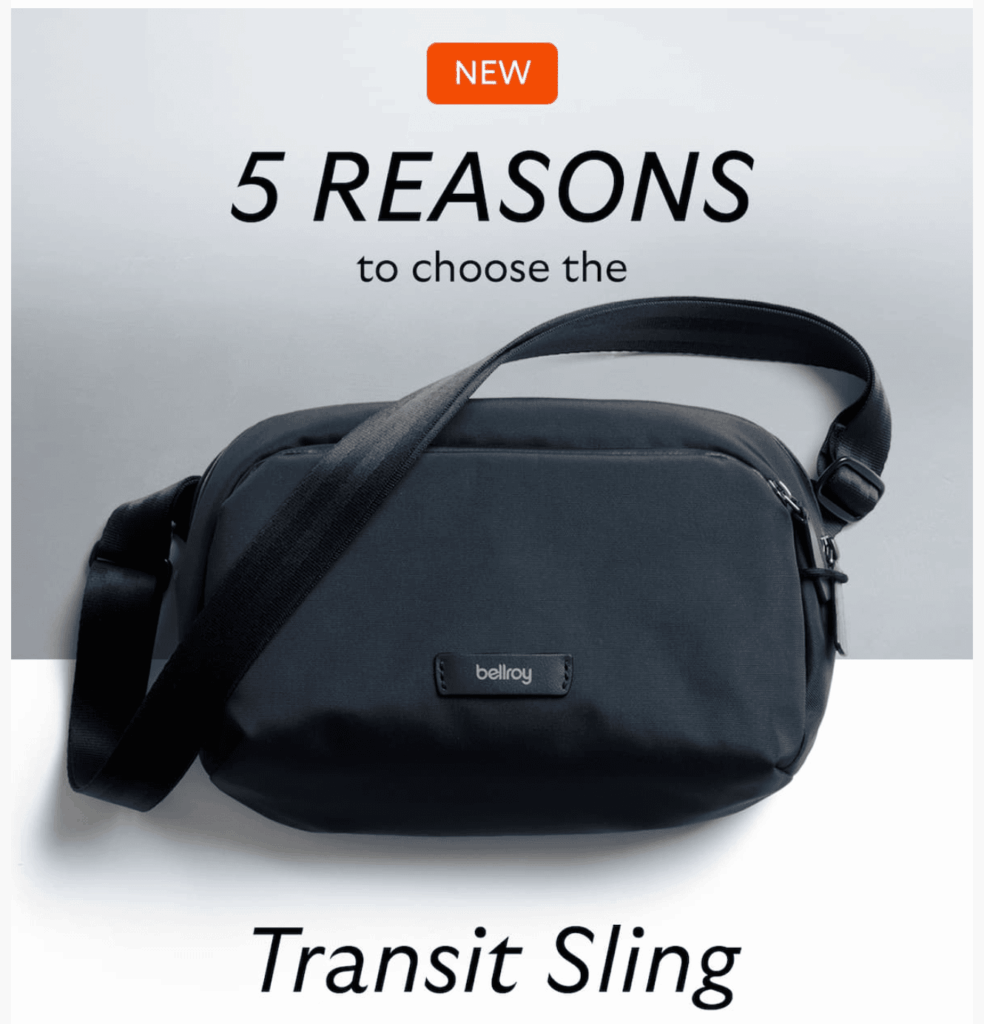
Then, instead of just listing the reasons, they open the bag and show it stuffed with all the items you’d actually carry, like notebooks, phone, keys, chargers, and other daily essentials.
Instead of just describing the pockets, it shows you exactly how those pockets work and how much space they have.
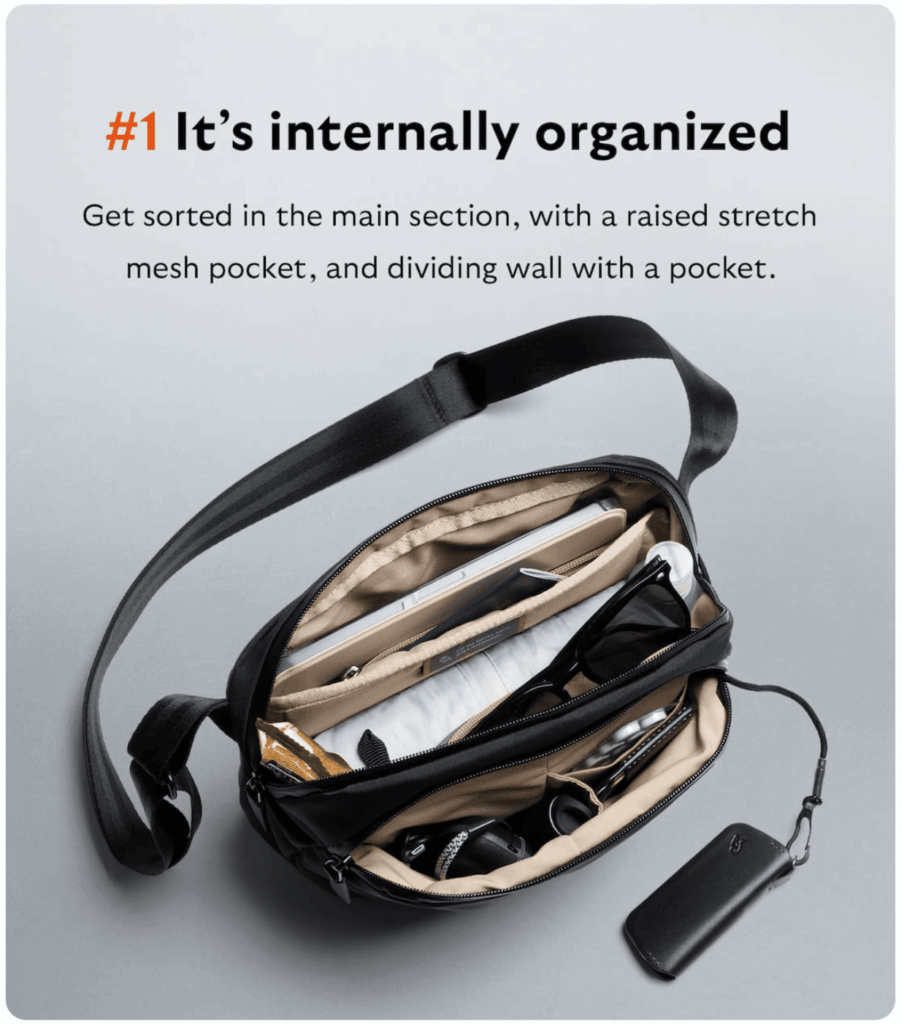
What makes this campaign effective: It combines education with practical demonstrations, showing the product in action rather than just describing it.
3. Birddogs
Birddogs’ email campaign takes a completely different approach by using humor in their storytelling to connect with their audience before mentioning their products. This email design example proves that entertainment can be just as powerful as traditional sales copy.
The campaign speaks directly to their target audience, using drawings and humor that feel like something you’d share with friends rather than typical brand emails.
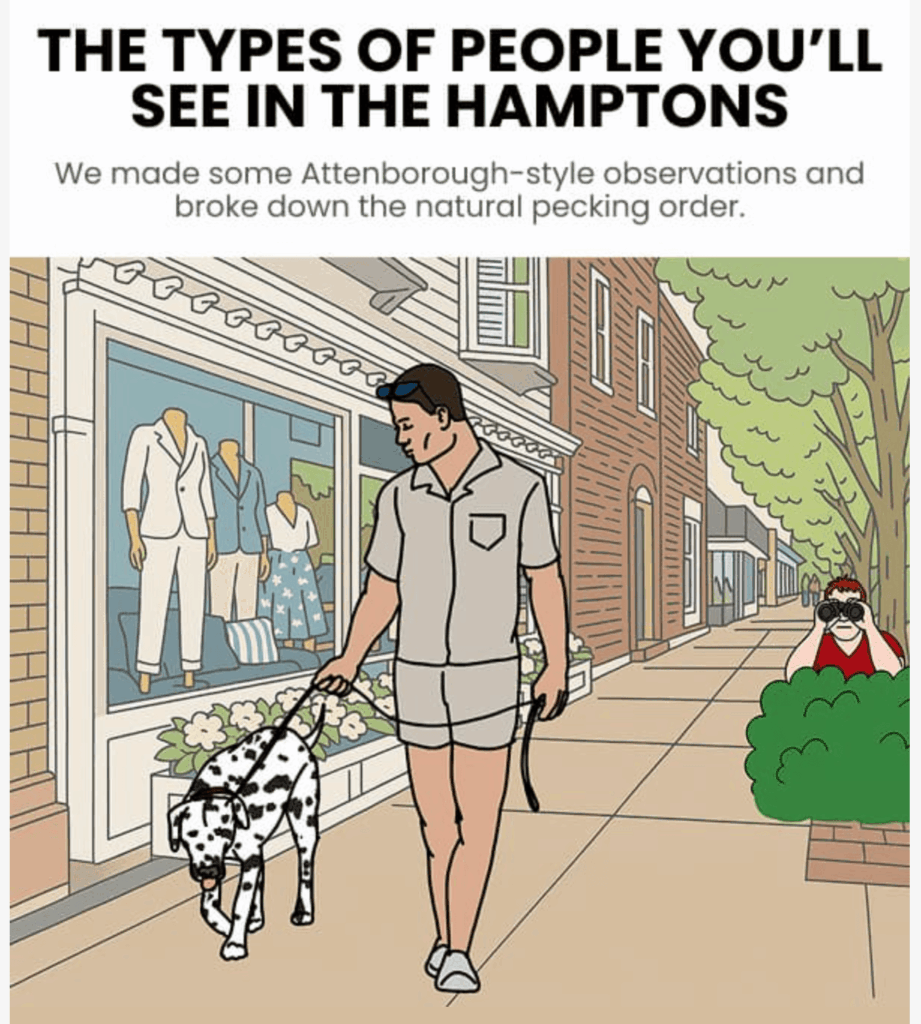
They show fictional characters that are funny because they’re recognizable. It’s the kind of content people actually want to read, not just skip past.
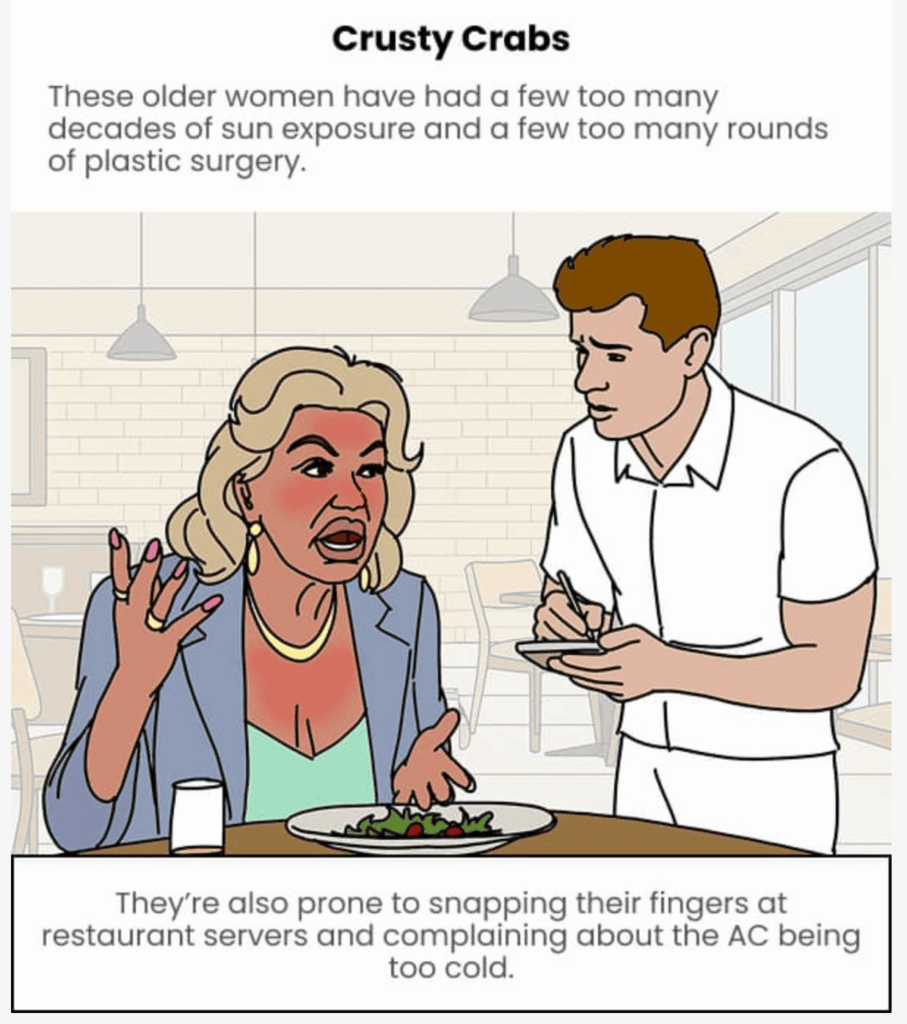
The genius move comes at the end when they reveal the punchline: despite these different personalities, they were all wearing the same Tech Linen collection. This approach makes the product feel naturally integrated into the story rather than forcing a sales pitch.

What makes this campaign effective: It entertains first and sells second, proving that creative storytelling can build genuine connections while still driving product awareness.
4. Inessa
Building trust by focusing on service rather than products is how supplement company Inessa stands out from the competition.
Instead of pushing their supplements directly, they focus on getting readers to book a consultation with a registered nutritionist, making it feel like you’re getting personalized care, not just another sales pitch.
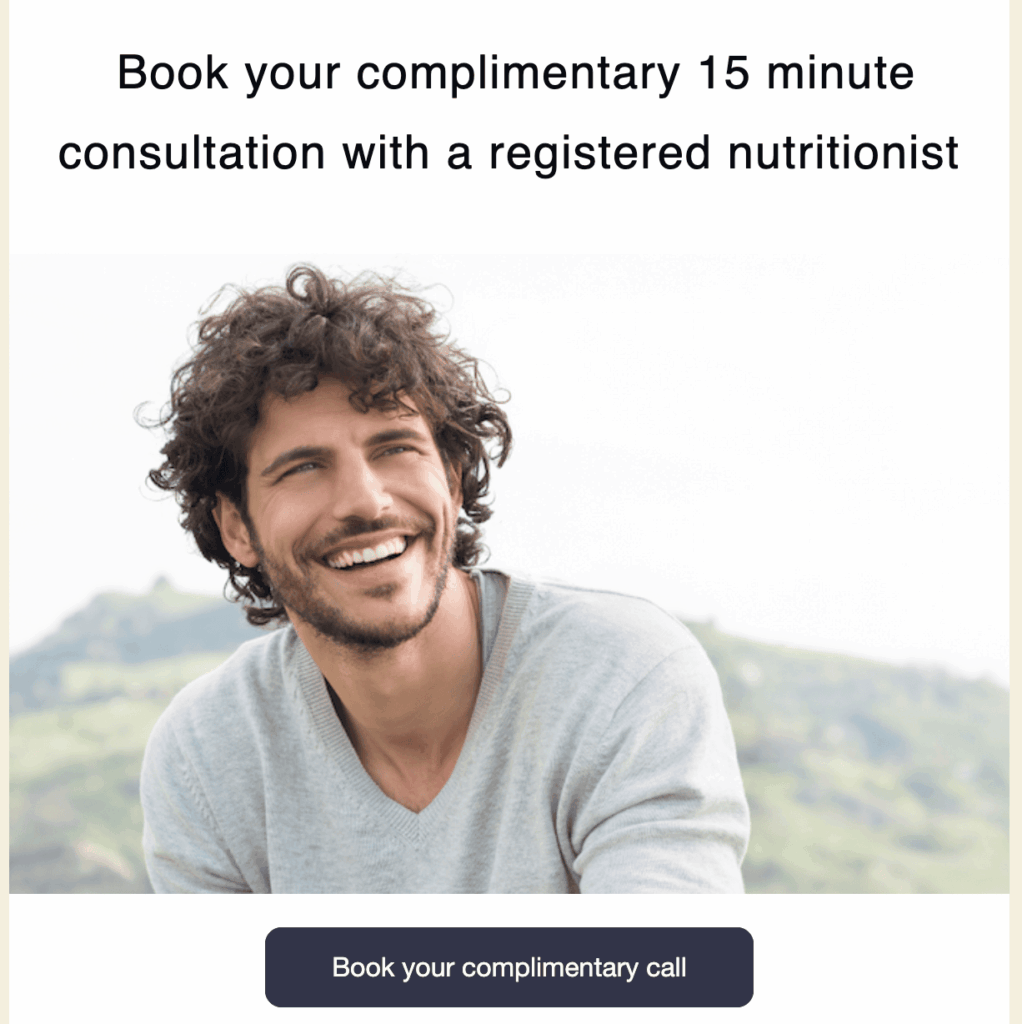
By focusing on the consultation, Inessa positions itself as an advisor who wants to understand your specific needs first.
They then build on this trust by showcasing their team’s expertise in specific areas, such as energy optimization and gut health.
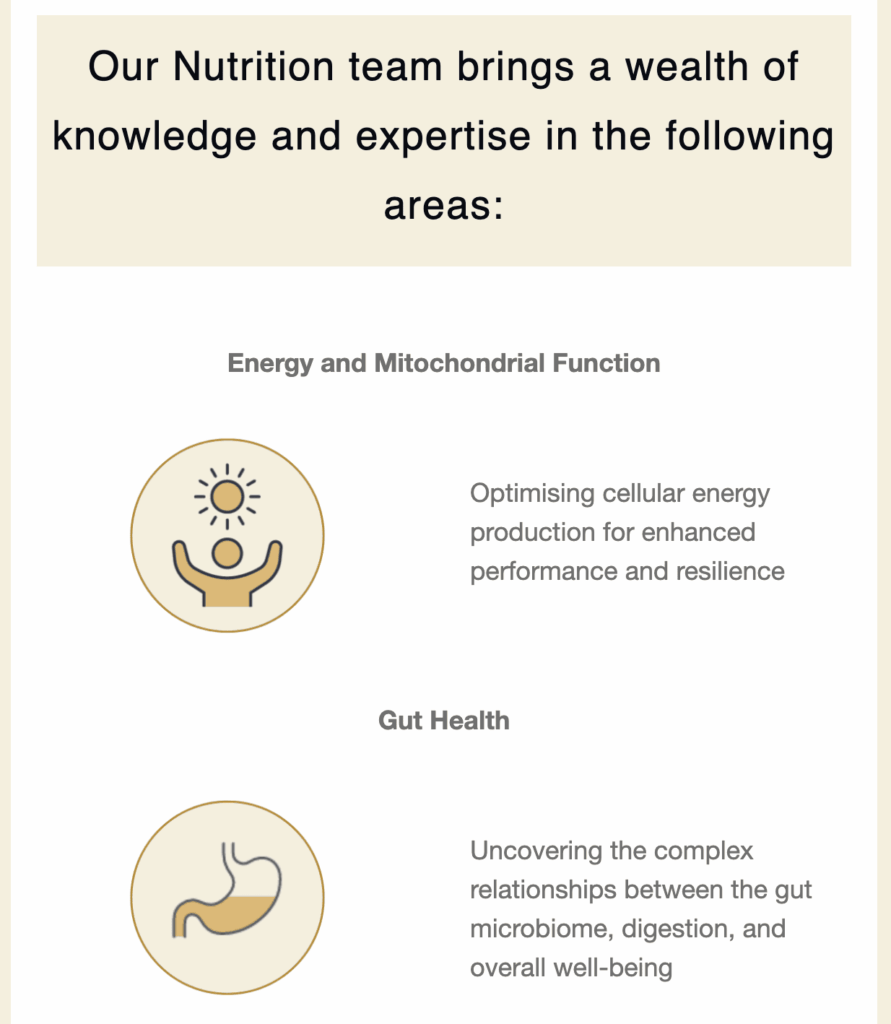
What makes this campaign effective: It leads with service and expertise rather than products, making customers feel like they’re getting personalized care and professional guidance rather than just buying supplements online.
5. My Bargain Buddy
Another excellent example of building trust and connection first is My Bargain Buddy’s newsletter campaign.
Instead of jumping straight into deals and discounts, the founder opens with a heartfelt letter about her personal struggles and life changes. The email reads like something you’d get from a close friend.

She even invites readers to reply directly and share their own thoughts. This transforms the email from a typical email blast example into the start of a conversation. It’s like getting a message from someone who actually cares about you as a person, not just as a customer.
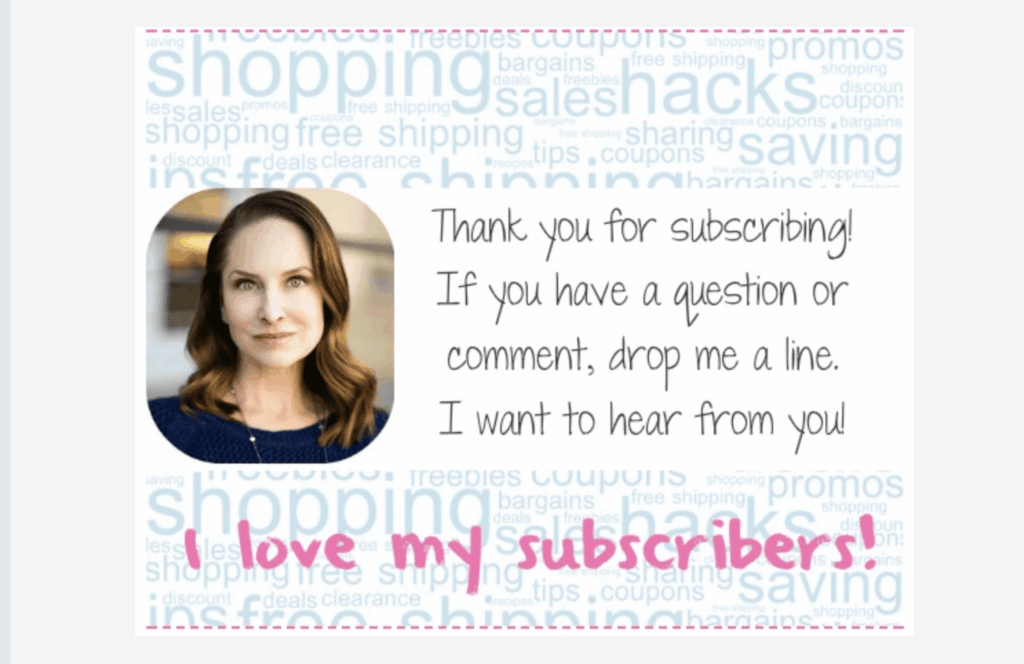
What makes this campaign effective: It prioritizes relationship-building over selling, showing how authentic brand emails can create trust and encourage genuine two-way communication.
6. Andamen
Taking the connection idea even further, Andamen sells a feeling rather than just a product with their newsletter campaign.
Instead of focusing only on fabric details or product specifications, they associate their products with a relaxed lifestyle.
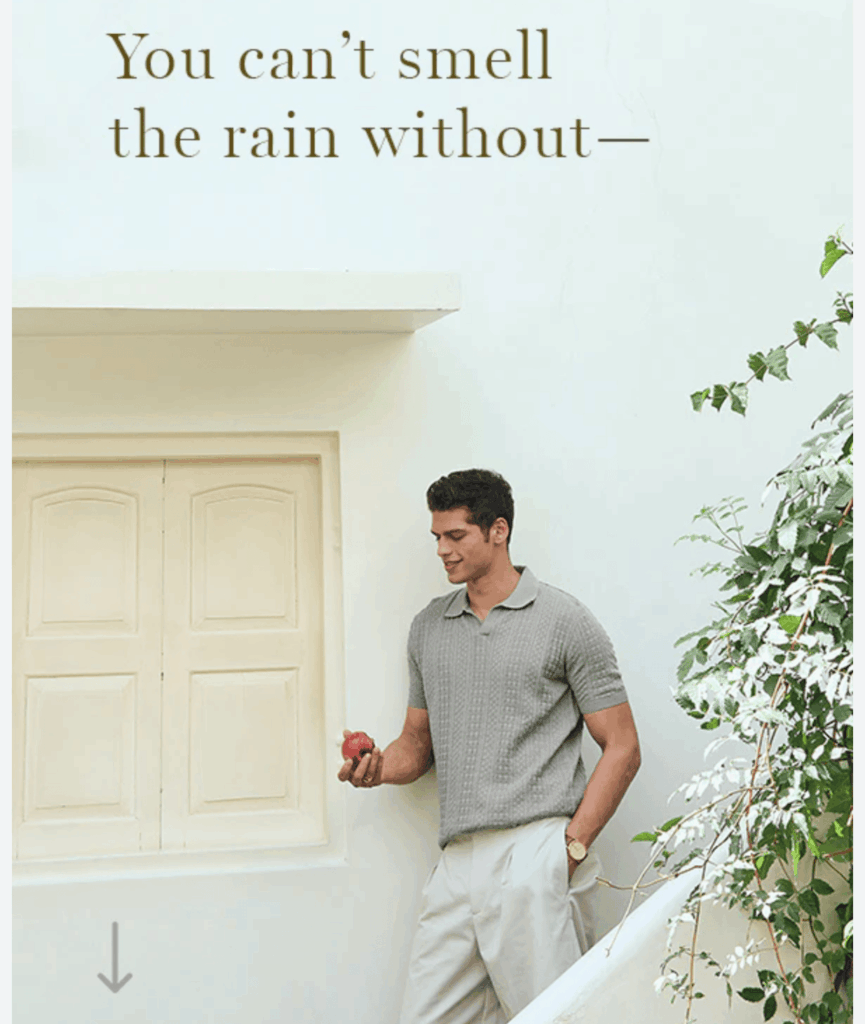
The photos and copy highlight the mindset and feelings that come with wearing their clothes. It’s about the calm, peaceful moments that help customers imagine how they’ll feel, not just how they’ll look.

What makes this campaign effective: It creates an emotional connection, making customers feel like they’re embracing an aspirational lifestyle rather than just purchasing clothes.
7. Porte + Hall
Porte + Hall’s email campaign shows how understanding your audience’s specific pain points can make your product appear more valuable.
They’ve built their campaign for a target audience of families with young children and pets, focusing on how their products help alleviate the chaos these households deal with daily.
Instead of just claiming their mat is non-slip, they prove it works. You can see pets and children actually using the space, showing how the mat stays put even with all that action.

The copy reinforces this by describing how their rugs protect floors from nail scratches. This shows they deeply understand the issues that families with pets face.
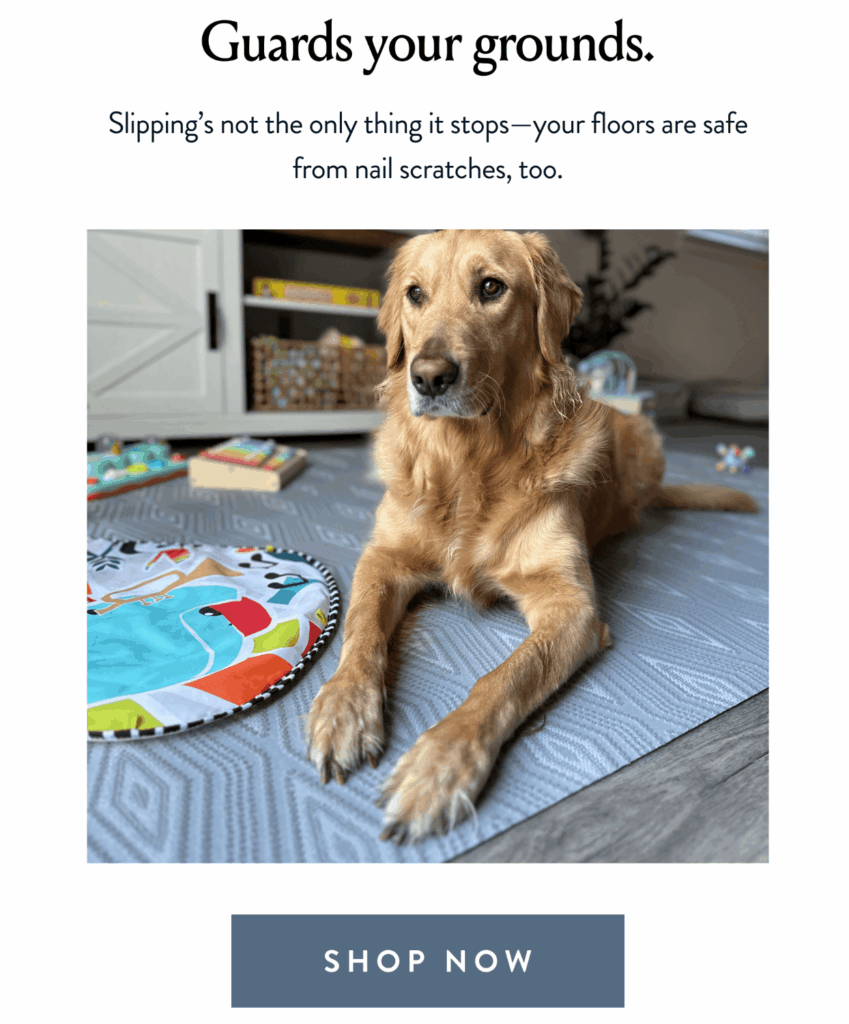
What makes this campaign effective: It targets a specific audience with a specific problem and uses visual demonstration to prove the solution works. This shows how newsletter campaigns can address real customer pain points.
8. Wine.com
You’ll notice a common theme with these email campaign examples: building trust and connection is vital. Wine.com does this well by positioning themselves as wine educators who sell great bottles, rather than just another wine retailer.
The campaign leads with detailed information about a particular wine, including the history, the specific vineyard location, and even tasting notes that paint a picture of the experience.
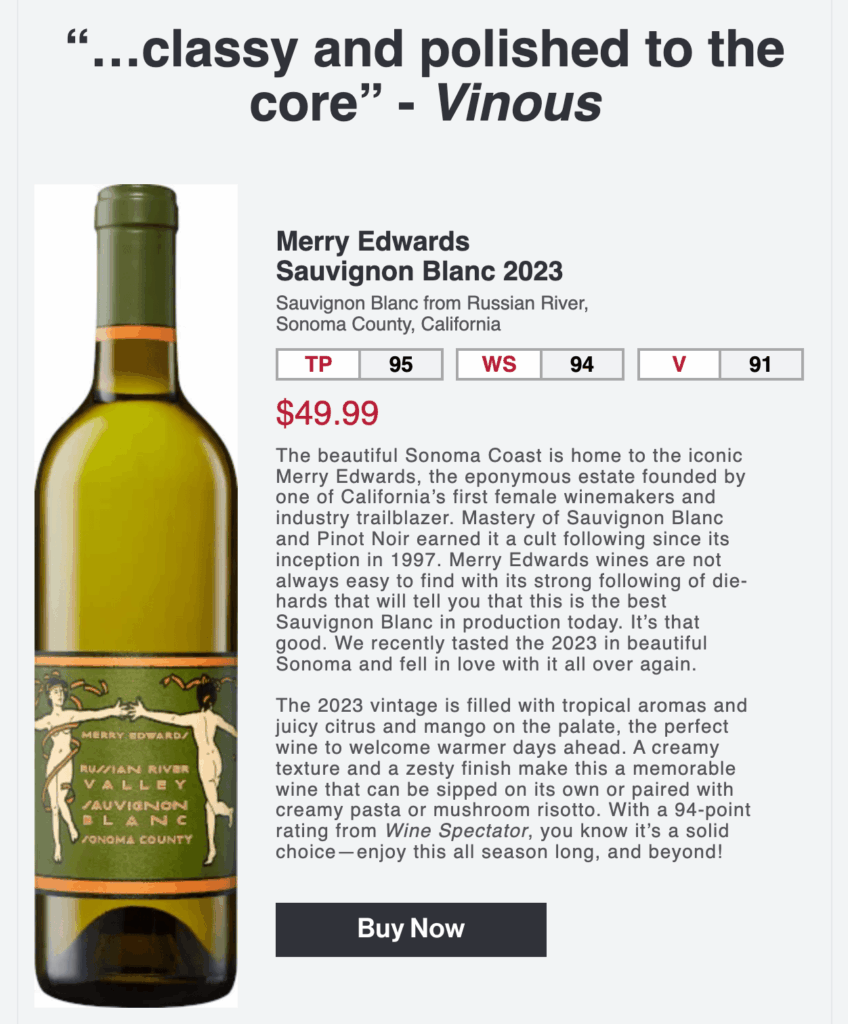
The second part of the campaign extends this educational approach with curated content. These sections feel like helpful guides that solve real problems, like which wines to bring to a BBQ.

What makes this campaign effective: It builds authority through education, making customers feel like they’re learning from a wine expert rather than just shopping at a place that sells wine.
9. Tottenham
Sometimes the goal of an email marketing campaign is to inform and update subscribers, and Tottenham does exactly that, while taking it a step further to deepen fan engagement.
The campaign starts with pertinent news: welcoming a new player alongside key details like his previous club, nationality, and contract length. This gives fans the information they want about their latest signing, making them feel informed and connected to the team’s decisions.
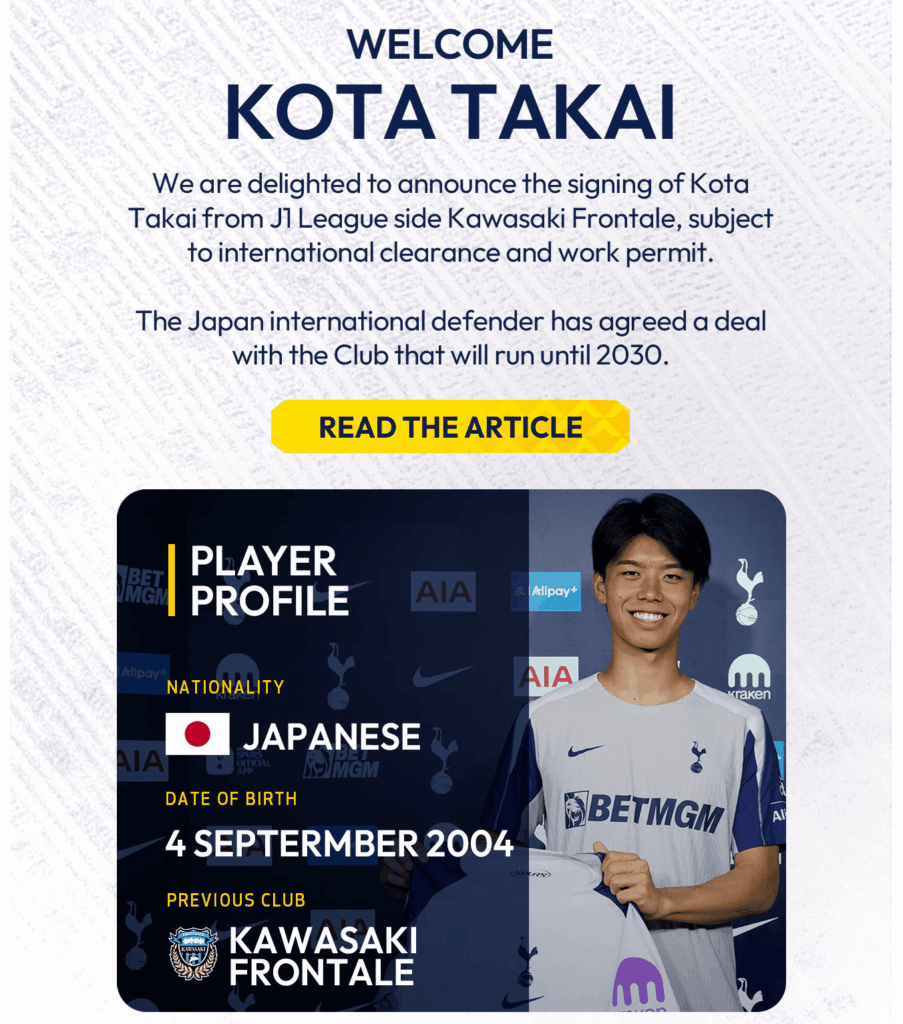
But here’s where it gets better. The second part transforms passive readers into active participants with a competition to win the player’s signed shirt.
It’s an exciting way to turn a simple announcement into an opportunity to keep fans interacting with the club.

What makes this campaign effective: It delivers essential news while giving fans a chance to engage, transforming a routine update into something that brings the club and supporters closer together.
10. Magnolia Pearl
Another terrific example of keeping subscribers informed and engaged is Magnolia Pearl’s approach to product launches.
Instead of just announcing their new collection, they create anticipation by offering several ways for subscribers to engage – from live social media events to behind-the-scenes videos or direct ordering through sales reps.
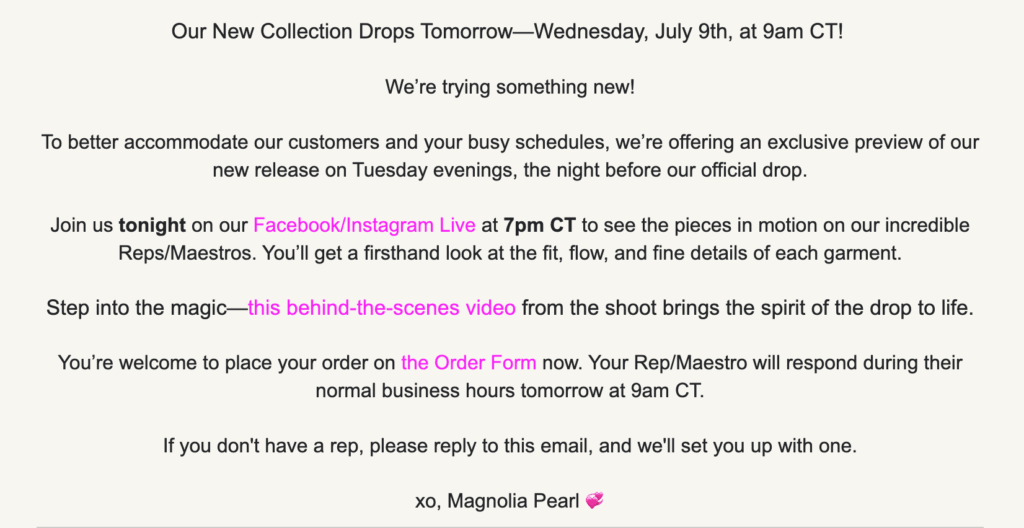
This approach recognizes that people prefer a variety of ways to connect with brands, and allows them to do so within a single, cost-effective communication.
What makes this campaign effective: It builds anticipation while enabling the widest range of customers to participate in a major marketing event.
11. inFlow
Email marketing campaigns are excellent for reminding subscribers about notable details like upcoming events, and inFlow’s webinar reminder shows how to do this effectively.
The campaign summarizes key topics attendees will learn about, making it clear why the webinar is worth their time. This helps people remember why they signed up and motivates them to actually attend.
The added incentive of a $100 gift card giveaway encourages people to stay until the end, ensuring better retention throughout the entire presentation.
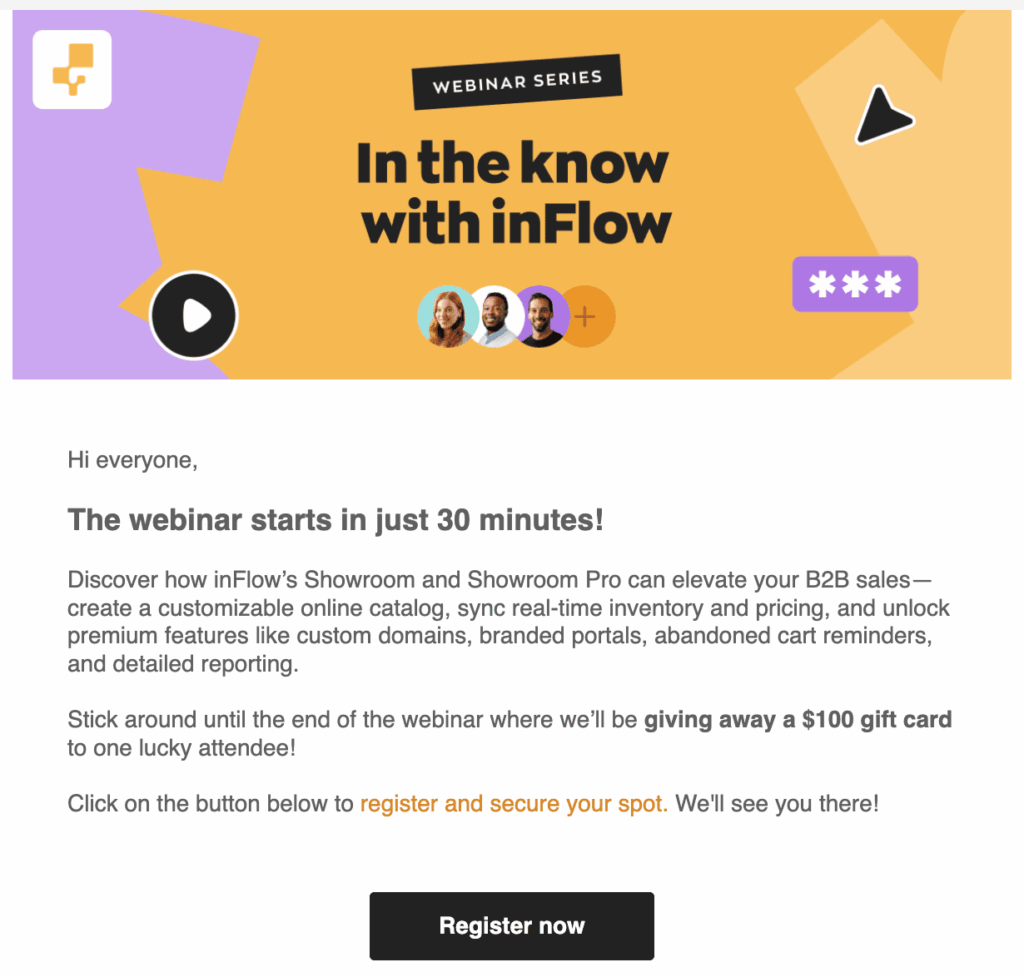
What makes this campaign effective: It creates urgency while reminding people of the event’s value, showing how email campaigns can boost attendance while building anticipation instead of pressure.
12. Rare Beauty
Abandoned cart emails are intended to encourage shoppers to complete their orders, and Rare Beauty does it well.
Instead of sounding pushy or desperate, they use language that fits naturally with their overall brand style.
They also showcase some bestselling products to gently encourage customers to return to the site, potentially increasing the order value beyond what they originally intended to purchase.
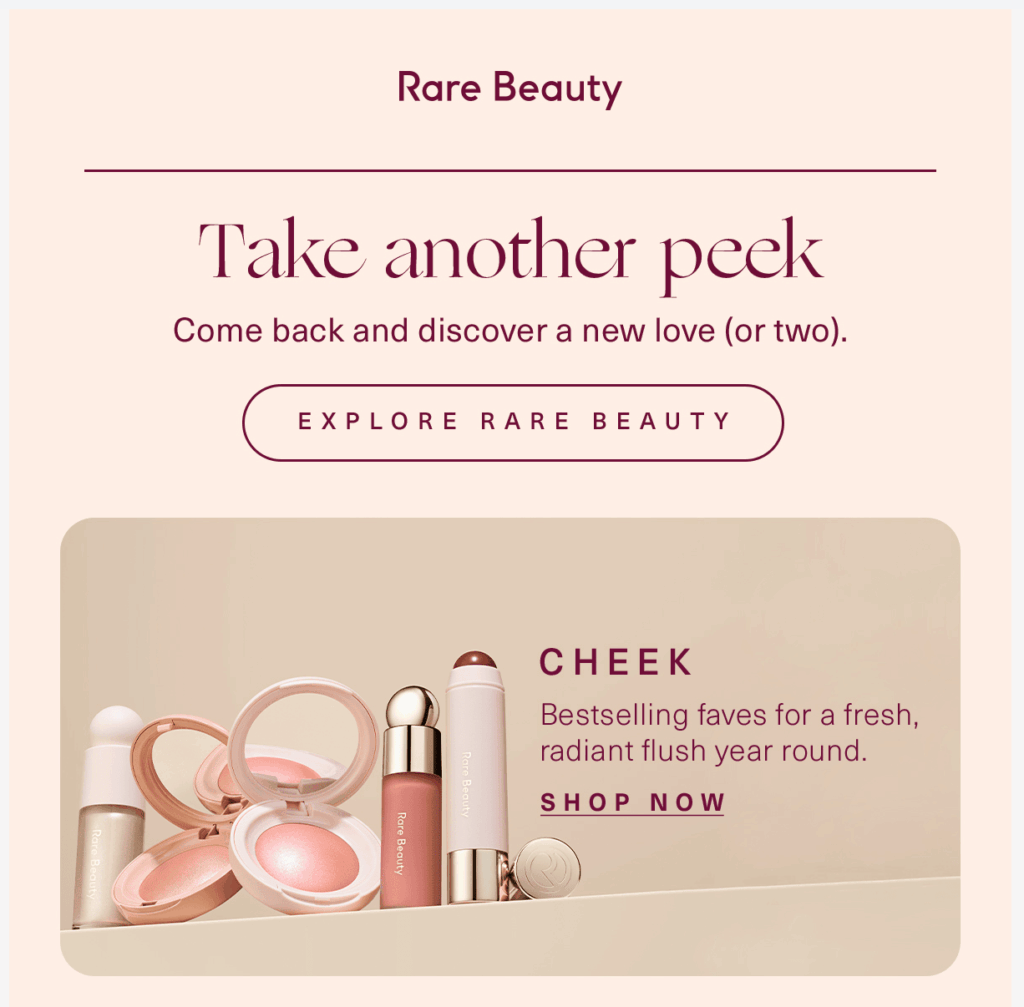
What makes this campaign effective: It uses inviting language that feels true to the brand without being pushy, while creating natural opportunities for customers to discover and buy more products.
13. Road Runner
Road Runner’s abandoned cart email is also a great example of a transactional campaign done right.
It reminds the shopper about the product they were interested in with a simple way to keep shopping.
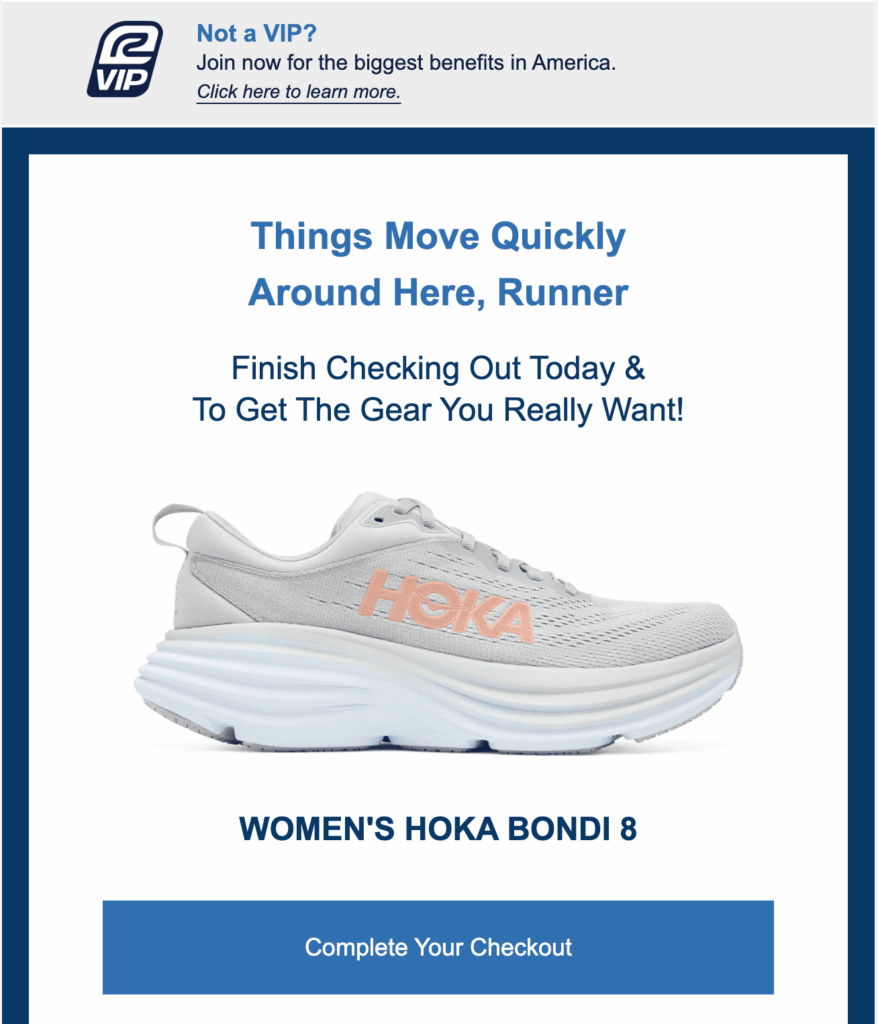
What really stands out in this email is how they think beyond just recovering a single sale. They show the actual shoes the shopper was looking at alongside complementary items like sports bras, leggings, and water bottles.
This approach goes beyond just recovering the abandoned cart and tries to increase the order value by suggesting items that naturally go together for a runner’s wardrobe.
Another great touch is the VIP benefits section that focuses on long-term customer retention rather than just this one purchase.
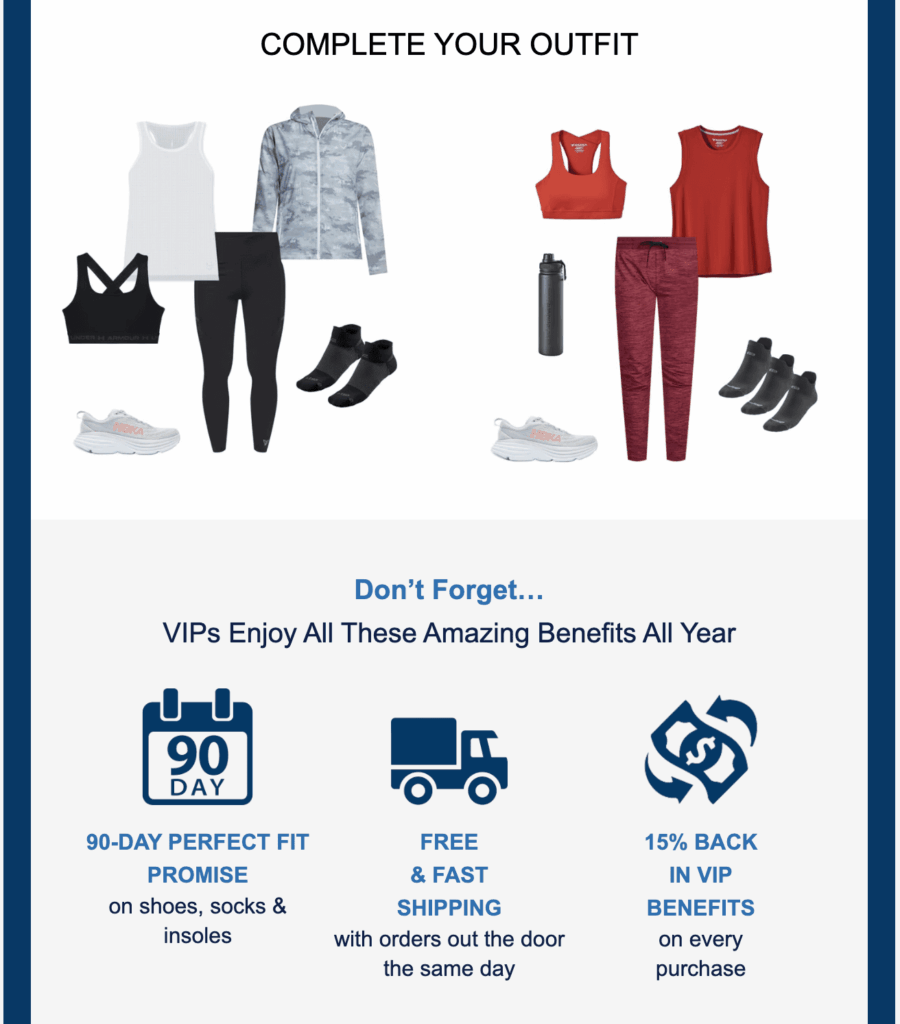
What makes this campaign effective: They’re thinking long term rather than just recovering a single sale. It brings shoppers back while encouraging them to buy more and to build a lasting relationship with the brand.
14. Camp Chill
Camp Chill does an excellent job of highlighting customers using their products in real-world situations to build trust.
Instead of just showing polished product shots, they show actual customers enjoying their floating platforms with their dogs.
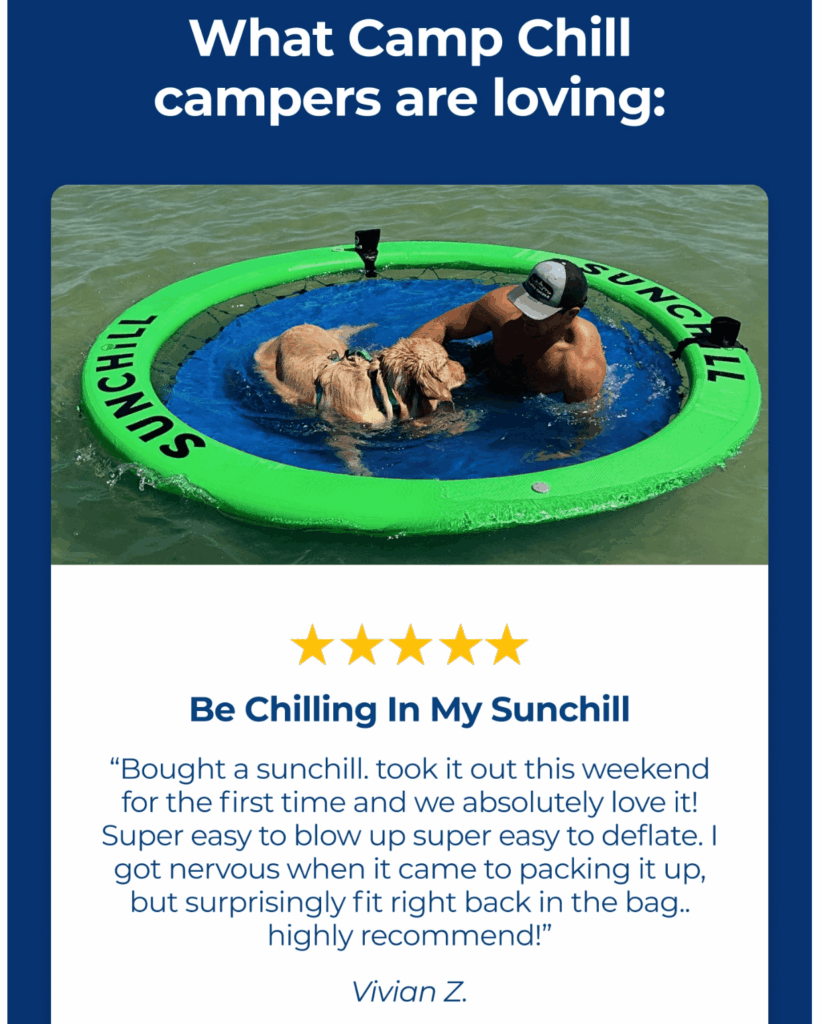
The testimonial reinforces this by addressing specific customer concerns like ease of setup, deflation, and storage. This detail helps potential customers feel confident about their purchase.
What makes this campaign effective: It shows real customers using the product alongside honest reviews, helping potential buyers imagine themselves having the same positive experience.
15. Moroccan Oil
Sometimes, you want an email campaign to just focus on getting the sale. Moroccan Oil does a great job of this by emphasizing the value of its offer while maintaining its premium brand positioning throughout the campaign.
It leads with a clear value proposition and explains exactly what customers get, making the math simple and the benefit obvious.
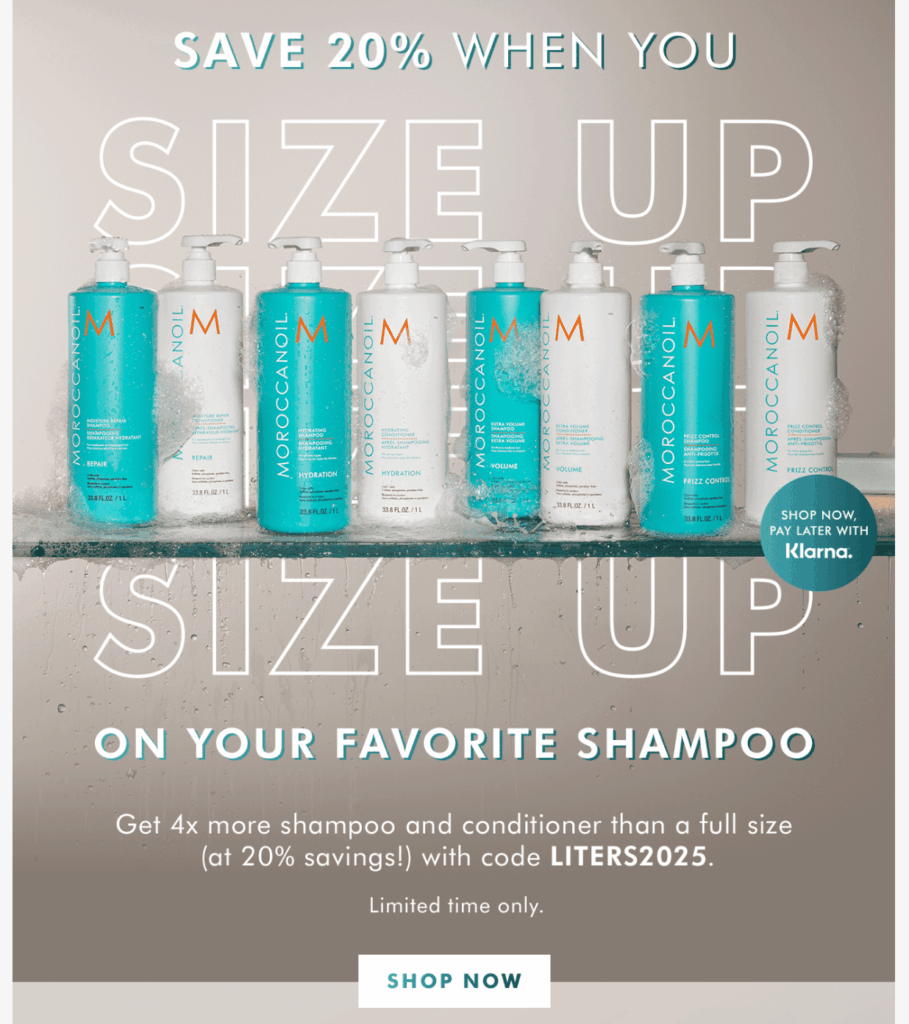
What keeps this from coming off as too salesy is how they maintain their luxurious brand tone throughout. They feature their best-selling fragrance with elegant product photography and sophisticated copy.
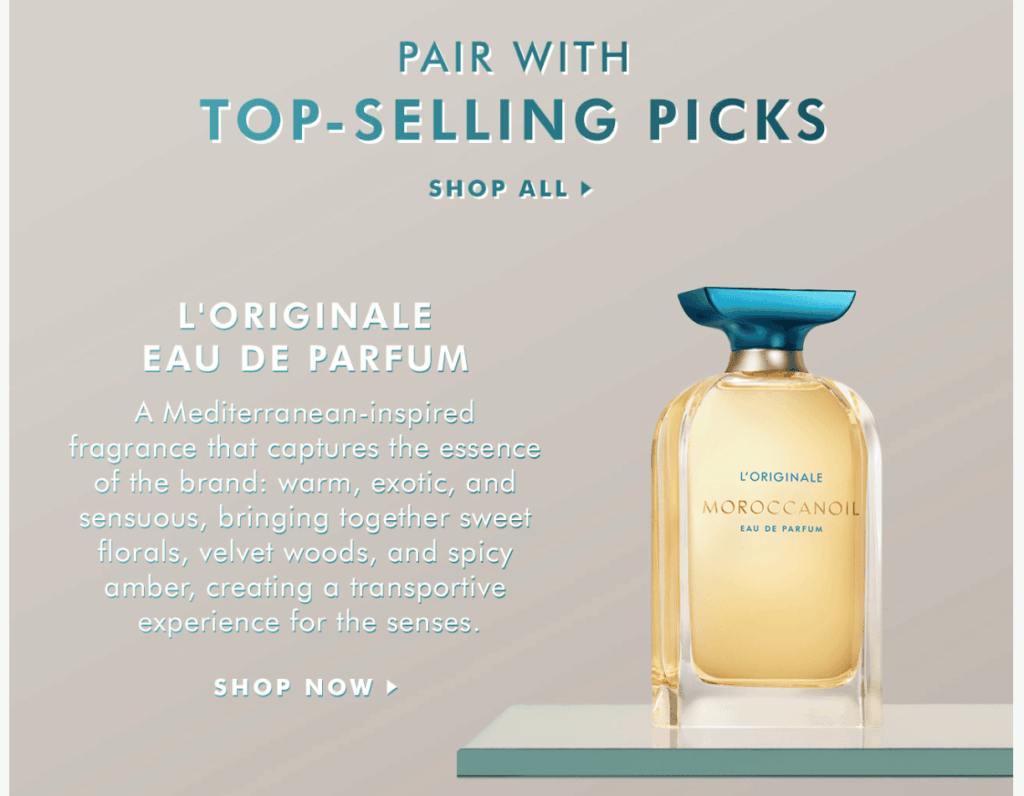
What makes this campaign effective: It balances clear savings with a premium brand feel, making a direct sales pitch feel classy rather than pushy while offering flexible payment options.
16. Campo Grande
Campo Grande’s promotional campaign focuses on bold copywriting and a compelling offer that’s impossible to ignore.
The copywriting is brilliant because it positions their product against wagyu – the gold standard of premium beef. Claiming to beat the pinnacle of steak quality immediately grabs attention and creates curiosity.
What makes this work is the money-back guarantee that follows immediately. Rather than making empty promises, they’re actually backing up their bold claim.

What makes this campaign effective: It makes such a bold offer with no risk that it’s irresistible to anyone interested in high-quality meat, while positioning a product against the gold standard.
Finding your email marketing approach
These examples show the diversity of email marketing campaigns. Companies choose one type over another to meet specific or unique goals.
Some brands like Inessa and Wine.com lead with education and expertise to build trust before selling. Companies like My Bargain Buddy prioritize personal connection. Birddogs uses storytelling and a humorous approach.
Others like Afina and Porte + Hall focus on solving specific customer problems, while brands like Moroccan Oil and Campo Grande create compelling sales offers that drive immediate action.
The key is understanding your audience, knowing what you’re trying to achieve, and finding an approach that feels authentic to your brand. Whether you’re trying to educate, entertain, build relationships, or drive sales, there’s an email strategy that can help you achieve your goal.
How do I launch an effective email campaign?
To launch an effective email campaign, you need to know who you’re talking to, what they care about, and what action you want them to take. This foundation shapes everything else, from the tone to the timing of your messages.
Next, you’ll need to choose an email marketing platform that fits your needs, build or import your subscriber list, and create email templates that look professional while displaying seamlessly on mobile devices.
Your subject lines also need to be compelling enough to get emails opened, while your content should deliver on the promise you make in that subject line.
You’ll want to test different subject lines, send times, and email designs to see what works best for your specific audience. Track key metrics like open rates, click-through rates, and conversions to understand what’s working and what needs adjustment.
For a complete step-by-step guide, check out our detailed tutorial on how to create an effective email campaign. It covers everything from choosing the right platform to creating engaging content for readers.
How can I create an email campaign with Hostinger Reach?
To create an email campaign with Hostinger Reach, just connect your website to our email platform with one click if you’re using Hostinger’s website builder.
Instead of manually importing subscriber lists or setting up third-party integrations, Hostinger Reach pulls your subscriber data directly from your website forms, making lead generation automatic and straightforward.
Within the platform, you can create professional email campaigns using our AI-powered editor. Just describe what you want, and let AI generate your email layouts for you.
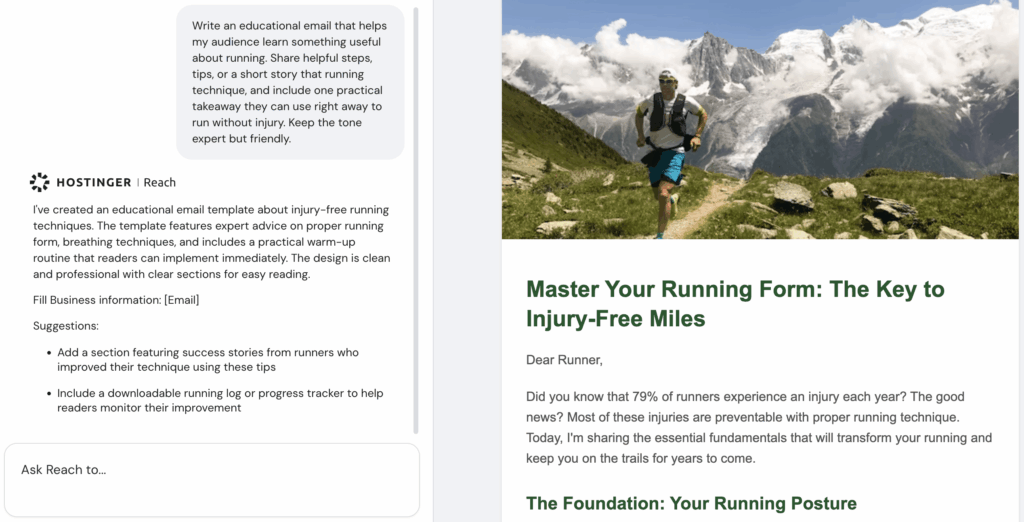
The platform handles the technical details like deliverability and mobile optimization, so you can focus on creating content that connects with your audience.
Check out our complete platform overview to learn more about how email marketing with Reach can boost your marketing efforts.
What are the alternatives to email marketing?
Email marketing alternatives include social media marketing, content marketing, paid advertising, and search engine optimization (SEO).
Each of these can be effective tactics for your business, but they work best as parts of a comprehensive marketing strategy that includes email marketing.
- Social media platforms like Facebook, Instagram, and LinkedIn offer powerful ways to reach new audiences and engage with existing customers through helpful or informative posts.
- Content marketing through blogs, videos, and podcasts helps establish your expertise and attracts potential customers by providing valuable, engaging information.
- Paid advertising through Google Ads or social media can drive immediate traffic and conversions when you need faster results.
- SEO helps people find your business when they’re actively looking for solutions you provide.
Email marketing is typically one of the quickest and most cost-effective methods for reaching your audience, but it works best when supported by these other channels.
For example, you might use social media to attract new followers and encourage them to join your email list for exclusive deals. You could also drive traffic to your website through SEO and content marketing and use email campaigns to nurture those visitors into customers.
Successful businesses combine different marketing methods that support and enhance each other.
Want to see how these strategies work together in practice? Our guide on how to promote your product online covers everything from organic strategies to paid advertising approaches that actually work.
All of the tutorial content on this website is subject to
Hostinger’s rigorous editorial standards and values.







